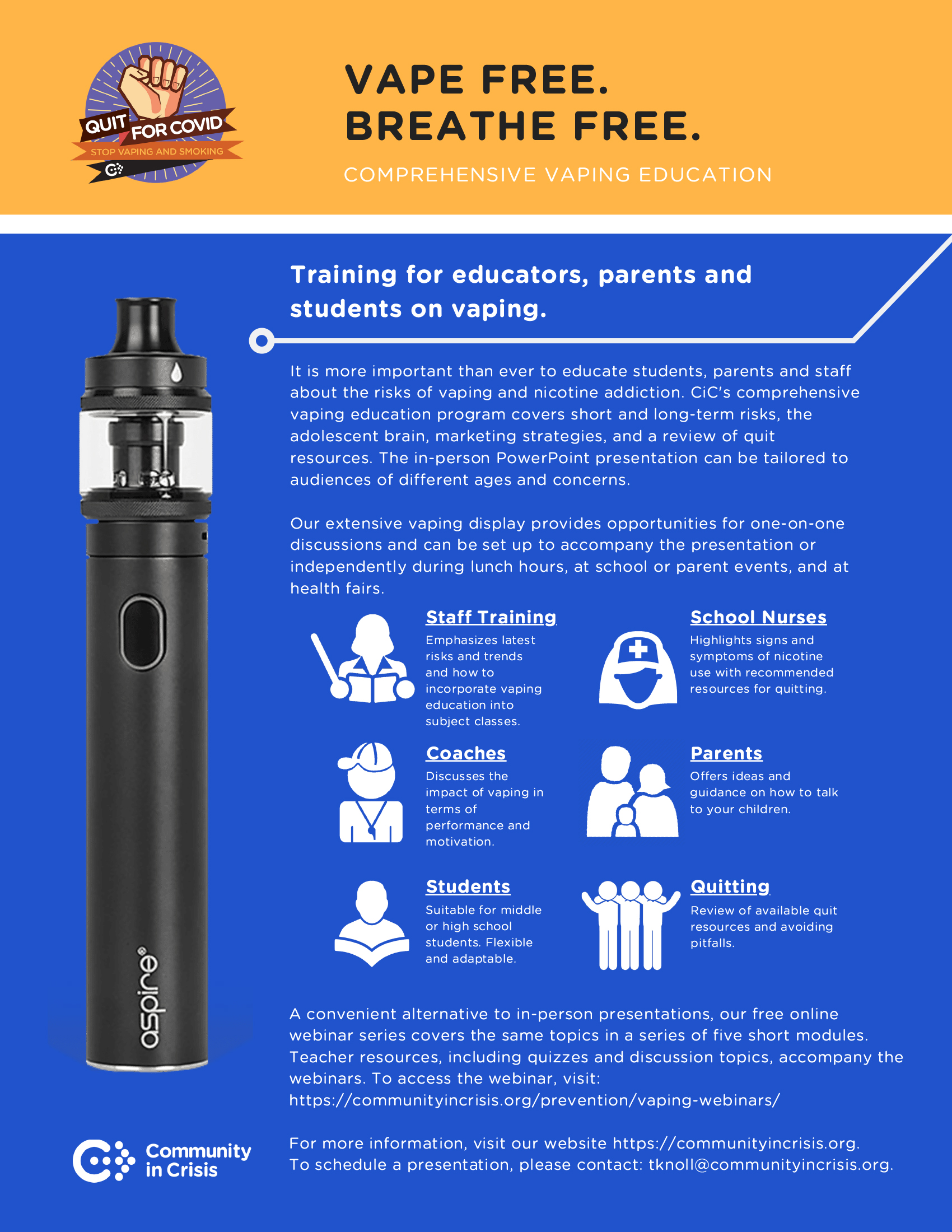

The long-term effects are unknown but vaping is not harmless. But with different claims out there, it would be best to stick to the facts.ġ. If it is that simple, is vaping safe to use? Many claims say that vaping is a less unhealthy option than smoking however, there are claims that state otherwise.Ĭonsistent vape users argue that vaping and e-cigarettes have helped them stay away from regular smoking. Puffing or pressing a button activates the heating device, which then vaporizes the liquid in the cartridge that is to be inhaled by a person. This juice usually contains water, nicotine, flavorings, and a propylene glycol or vegetable glycerin base. The vapor, or aerosol for e-cigarettes, produced comes from the liquid solution or e-juice. Most e-cigarettes have four components: a cartridge to hold the liquid solution, a heating element, a power source, and a mouthpiece. How Do E-cigarettes or Vaping Devices Work?

This leads to an increased heart rate, developing the risk of a heart attack, coronary artery disease, and blood circulation problems. Furthermore, continued e-cigarette usage can lead to heart-related diseases.Īccording to WebMD, e-cigarette users were 56% more likely to suffer a heart attack than non-users since these devices contain enough nicotine to raise blood pressure and cause adrenaline spikes. In February 2020, the CDC confirmed 2,807 cases of vape-related lung injury and 68 deaths attributed to the condition. While the numbers continue to grow, so do the number of cases of vape-related diseases. Among these numbers, the Philippines’ vape users stand at 2.7 million in 2021, about 3% of the global population of vape users. In 2021, the Global State of Tobacco Harm Reduction (GSTHR) published a worldwide estimate of around 82 million vape users, a 17% increase from 2020. Since its creation, the number of people switching from traditional tobacco to these vaping devices has been rising. In 2003, Hon Lik, a Chinese pharmacist, invented the e-cigarette that we know today. However, is vaping considerably less harmful? How much is known about vaping? We have created an infographic to deliver some interesting vaping facts. While it is challenging to quit smoking because of its addictive qualities, many people are switching to what is, seemingly, the less unhealthy option-vaping. According to the American Centers for Disease Control & Prevention (CDC), the risk for the following diseases increases with continued tobacco use: The long-term effects of smoking are so severe that the diseases linked to it can cause lasting damage to one’s physical and mental health and, in worst cases, can even be fatal.Īround 87,600 Filipinos die every year because of tobacco use. Smoking entails many adverse effects that can damage the lungs and other parts of the body, including the heart, throat, eyes, nose, and mouth. Not only is this true, but also a good reminder. Department of Health and Human Services.“Cigarette smoking is dangerous to your health” is a common word of caution seen in cigarette ads and labels. Citation of the source is appreciated, using the following language: Source: National Institute on Drug Abuse National Institutes of Health U.S. This publication is available for your use and may be reproduced in its entirety without permission from NIDA. Note: Figures have been rounded to the nearest whole number. In 2019, 6% of college students and 15% of non-college peers used cannabis daily. Rates among college students have increased from 34% in 2014 to 43% in 2019, accounting for a 9% five-year increase.ĭaily CANNABIS USE was more common among non-college young adults in 2019ĭaily use of cannabis-defined as use on 20 or more occasions in the past 30 days-was nearly 3x as high among young adults not attending college compared to peers in college. Rates of any cannabis use reported over the past year have steadily increased from 37% in 2014 to 43% in 2019 in non-college young adults. Past year CANNABIS USE remained at historic highs. Rates among non-college peers remained steady at 8% in 20 and increased to 17% in 2019.

Past month CANNABIS VAPING increased sharply among non-college young adults in 2019.Īmong college students, rates of cannabis vaping reported in the past 30 days have increased from 5% in 2017 to 11% in 2018 and 14% in 2019. Rates among non-college peers have increased from 8% in 2017 to 13% in 2018 and 18% in 2019. Past month NICOTINE VAPING rose dramatically over 3 years.Īmong college students, rates of nicotine vaping reported in the past 30 days have increased from 6% in 2017 to 16% in 2018 and 22% in 2019.


 0 kommentar(er)
0 kommentar(er)
